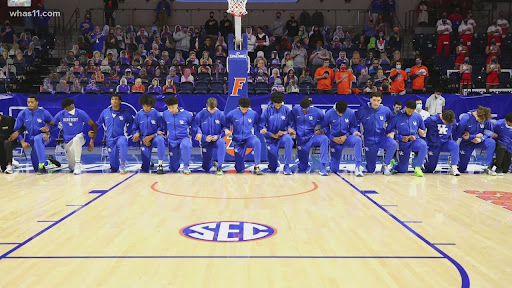Despite playing basketball and baseball at Kentucky, Ben Jordan died at the age of 22 on January 12, 2021. His death shocked basketball fans and college students alike. Jordan’s cause of death was hypertensive and atherosclerotic cardiovascular disease. According to his father, Kevin Jordan, his son sought solace in putting sports aside to focus on his education. Despite his tragic death, his legacy lives on.
Ben Jordan played baseball and basketball at Kentucky
A two-sport standout, Ben Jordan played basketball and baseball at Kentucky, and in his first season at UK, he redshirted. After a redshirt season in 2018, he returned to pitch in 10 games and was listed on the Wildcats’ 2021 roster. In addition to baseball, Jordan also starred in basketball, starring for West Carter High School. Last year, he made a brief appearance on the Wildcats’ basketball team, going 0-of-1 on field-goal attempts.
While playing basketball, Ben Jordan devoted most of his attention to baseball. After graduating from high school, he was an Under Armour All-American in baseball. Despite not playing baseball last year, Ben Jordan was able to make an appearance in three games for the UK basketball team last season while recovering from Tommy John surgery. Although his basketball career was on the wane after the surgery, his athletic prowess still made him a star.
After completing his first year in Kentucky, Jordan redshirted his senior year because of an injury. His sophomore year, he returned to the diamond and pitched eight innings. He allowed seven hits and one extra base hit while striking out eight batters. The following year, he made the Dean’s List. In honor of Jordan’s athletic achievements, the Arizona Wildcats wore shirts bearing his number 33 during the warmup process. During the game against Alabama, Jordan’s photo was displayed on the court.
Cause of death is listed as hypertensive and atherosclerotic cardiovascular disease
Symptoms of hypertensive and atheroscleptic cardiovascular disease are typically subtle. This type of heart disease causes thickening of the arteries and heart muscle, which makes them more vulnerable to heart attack and stroke. High blood pressure increases the risk of heart failure by two to three times. Symptoms can range from mild to severe and may include confusion, facial drooping, speech problems, headache, and dizziness.
A heart attack, also known as a myocardial infarction, occurs when the blood flow to the heart muscle suddenly decreases. Plaque deposits usually break open and form a blood clot, which obstructs the artery and limits the flow of blood. A heart attack causes part of the heart muscle to become injured, and can cause permanent damage if it is not treated quickly. Symptoms of a heart attack are usually diagnosed with an electrocardiogram, or EKG, which uses painless electrodes on the arms and legs to record the electrical activity of the heart.
In the past, hypertensive and atherosclotic cardiovascular disease have been the leading causes of death among both blacks and whites. In the recent past, however, these diseases have been linked to an increased risk of heart failure in people over 65. This has led to a significant increase in mortality from heart failure. The number of deaths from these diseases has more than doubled since 1970, and the risk of death from cardiovascular disease is now rising.
